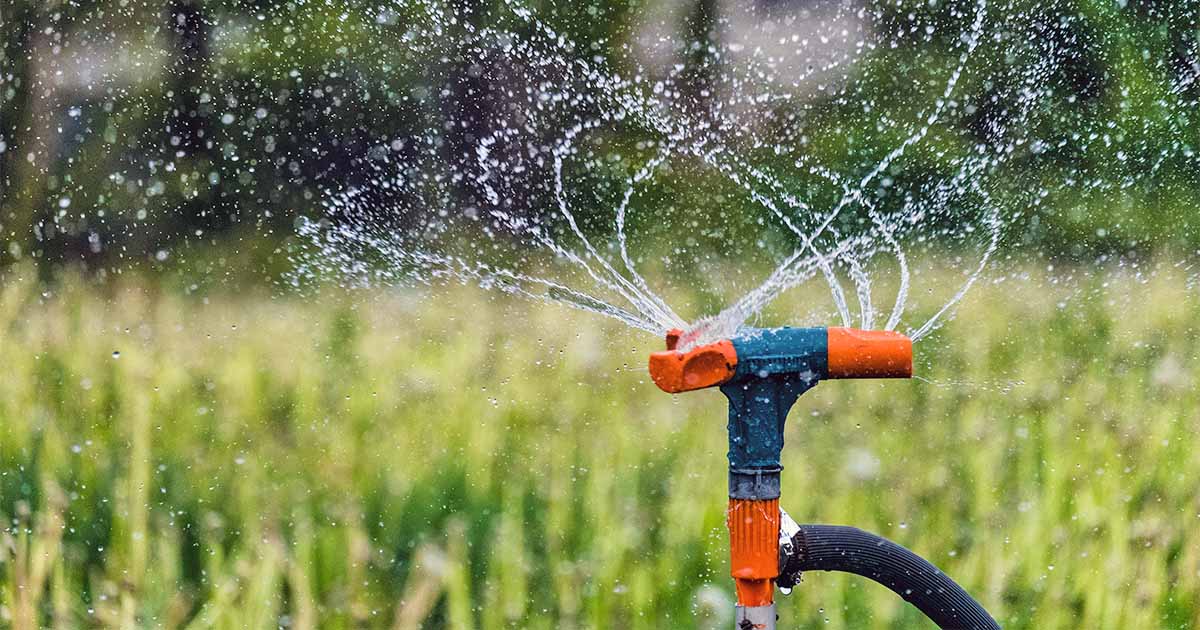
Comprehensive Guide to Monitoring and Securing an Irrigation System
Irrigation systems are essential for maintaining healthy landscapes and gardens, as they provide supplemental water when natural rainfall is insufficient. However, these systems can be vulnerable to failures and inefficiencies if not properly monitored and secured. In this comprehensive guide, we will discuss various ways to monitor and secure an irrigation system, ensuring optimal performance and water conservation.
Assess Your System Design and Capacity
Before monitoring and maintaining your irrigation system, it’s crucial to understand its design and capacity. This includes:
Type, layout, size, and components of the system
Water sources, quality, and availability
Estimated water requirements and demand of your crops, soil, and climate
Comparing water supply and delivery with your system’s capacity
By identifying any gaps, inefficiencies, or risks in your system design and capacity, you can plan for adjustments or improvements.
a. Types of Irrigation Systems
There are various types of irrigation systems, including:
Drip irrigation
Sprinkler systems
Surface irrigation
Subsurface irrigation
Each system has its own advantages and disadvantages, so it’s essential to choose the one that best suits your landscape and water requirements.
b. Water Sources
Irrigation systems can draw water from different sources, such as:
Public water networks
Wells
Rainwater harvesting systems
Rivers or lakes
The water source you choose will impact your system’s efficiency and the quality of the water being used. Ensure that you have a sustainable water source to prevent over-extraction and depletion.
Install and Use Monitoring Devices and Tools
Monitoring devices and tools can help measure and record various parameters and indicators of your irrigation system. These can be manual or automated, and include:
Meters, gauges, probes, and sensors
Controllers, timers, valves, and alarms
These devices and tools can help track your system’s performance and status, detect anomalies or malfunctions, and optimize irrigation schedules and rates.
Weather-Based Irrigation Controllers
Weather-based irrigation controllers, also known as smart controllers or WBICs, use local weather data and landscape conditions to tailor watering schedules, ensuring efficient water usage. Some options include:
Stand-alone controllers
Add-on or plug-in devices for existing clock-based controllers
These controllers can help automate irrigation schedule adjustments, making them more convenient and water-efficient.
Soil-Moisture Based Irrigation Controllers
Another option for efficient irrigation scheduling is soil-moisture based controllers. These devices monitor soil moisture levels and adjust the irrigation accordingly, preventing over- or under-watering.
Perform Regular Inspections and Maintenance
Regular inspections and maintenance are essential for preventing failures and losses in your irrigation system. Some tasks include:
Visual and physical inspection for leaks, cracks, clogs, corrosion, wear, or damage in pipes
Cleaning, repairing, replacing, or upgrading defective or outdated parts
Following manufacturer’s instructions and recommendations for inspection and maintenance frequency and methods
Using appropriate tools and safety precautions
Manage Water Quality and Quantity
Water quality and quantity are critical factors affecting the efficiency and effectiveness of your irrigation system. To maintain optimal water quality and quantity:
Test water regularly for contaminants and treat accordingly (e.g., filtering, disinfecting, desalinating)
Conserve and manage water quantity using water-saving techniques (e.g., drip irrigation, mulching, deficit irrigation)
Avoid over-irrigation or under-irrigation
Adapt to Changing Conditions and Needs
Monitor and adapt to changing conditions and needs by adjusting your system design, capacity, and monitoring devices and tools. Seek feedback and advice from experts, agronomists, or extension agents to improve your irrigation system.
Evaluate System Performance and Impact
Evaluating your system’s performance and impact can help assess its efficiency, effectiveness, and environmental and economic implications. Measure and analyze the outcomes and outputs of your system, compare results with industry or regional benchmarks, and identify strengths, weaknesses, opportunities, or threats.
Addressing Pressure Issues in the Irrigation System
Proper pressure management is crucial for irrigation efficiency. High pressure can lead to damage and increased water consumption, while low pressure can cause inadequate watering and reduced efficiency.
Monitoring and Regulating Pressure
Monitor your irrigation system’s pressure using meters or gauges, and regulate pressure using pressure regulators or control valves. This can help optimize water flow and prevent over- or under-watering.
Solutions for High or Low Pressure
If your system experiences high or low pressure, consider:
Installing a pressure regulation device for the entire house or irrigation system
Adjusting control valves for each zone
Replacing standard spray heads or rotors with pressure-regulated versions
Consulting with a professional to evaluate and address pressure issues
Implementing Protective Measures
To further secure your irrigation system and prevent potential risks, implement protective measures such as:
Installing a master valve to control water flow and prevent uncontrolled leakage
Using a pump control or pump start relay to regulate water flow and pressure
Integrating a water flow meter to monitor water consumption and detect anomalies
Employing modern pumps with built-in monitoring functions to identify and address issues
Additional Protection Options
Other protective measures for your irrigation system include:
Water level switches for cisterns with automatic water replenishment
Time delay relays to force pumps to turn off after a certain amount of time
By implementing these monitoring and security measures, you can ensure optimal performance and water conservation for your irrigation system, leading to healthier landscapes, reduced water waste, and lower costs.

